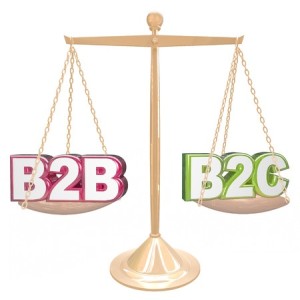
In the Online Marketing world, there are two basic methods of presenting a marketing strategy. The first is B2B, or Business to Business. This is the principle that relies on appealing to a business’ products or services as a means of delivering marketing services. This is in opposition to B2C, or Business to Consumer marketing, where the marketing strategy is centered around appealing to the consumer’s interest. B2B marketing is, in around about way, B2C marketing because ultimately the marketing is being directed toward the eventual interest of the consumer, as is all marketing in the end. The distinction lies in what exactly is being marketed. For example, a B2B might try to angle a product or service to a business by presenting the cold hard data in a raw structured form, so as to provide confidence in the product or service itself. On the other hand, B2C marketing might appeal to a consumer’s emotions such as how a product or service might help alleviate some inconvenient part of their life. In a B2B scenario, the marketer would appeal to the numbers and data that drive the product or service.
delivering marketing services. This is in opposition to B2C, or Business to Consumer marketing, where the marketing strategy is centered around appealing to the consumer’s interest. B2B marketing is, in around about way, B2C marketing because ultimately the marketing is being directed toward the eventual interest of the consumer, as is all marketing in the end. The distinction lies in what exactly is being marketed. For example, a B2B might try to angle a product or service to a business by presenting the cold hard data in a raw structured form, so as to provide confidence in the product or service itself. On the other hand, B2C marketing might appeal to a consumer’s emotions such as how a product or service might help alleviate some inconvenient part of their life. In a B2B scenario, the marketer would appeal to the numbers and data that drive the product or service.
In order to create an effective B2C strategy, certain keywords and phrases are needed to invoke an emotional response from the consumer and eventually lead to a sale. One way to come up with these words and phrases are to look at the data on public search records from online search engines such as Google. With this information, one could see that consumers most often use four-word phrases to search for products online. In a B2B strategy, those data figures can be used to directly influence the decision making of the business that is being sold on a product or service. So while there are some distinct differences between the two, B2B and B2C are ultimately strategies designed to affect the consumer in the end, even though B2B is being directed in a different manner than B2C.


